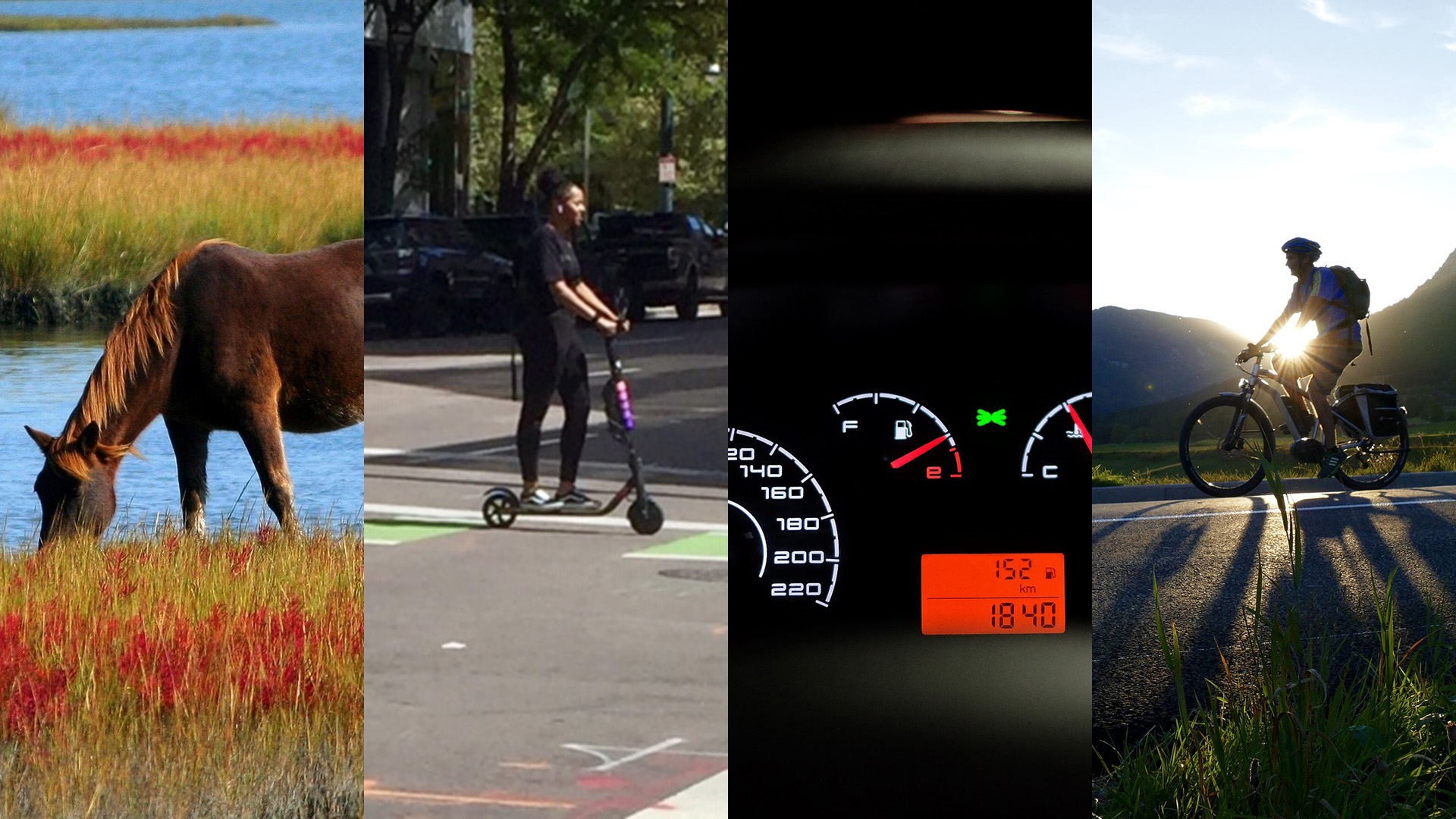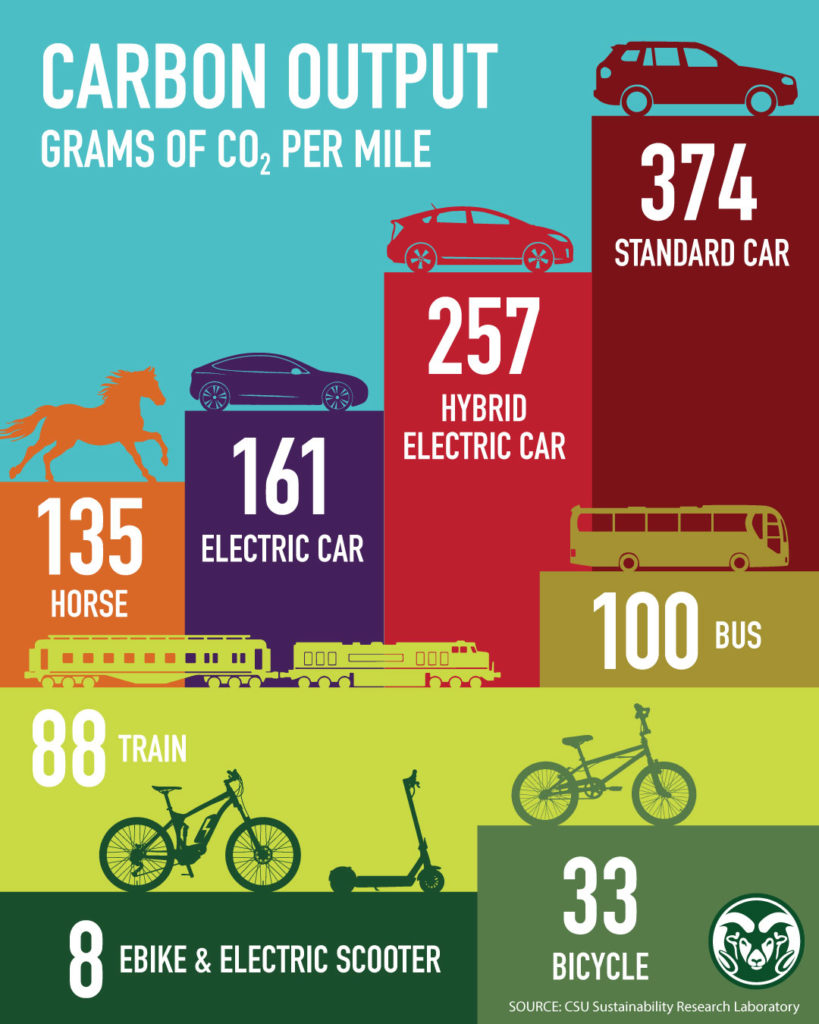
By horse, by train, by car, by scooter?
What are the most environmentally friendly modes of transportation?
story by Allison Sylte
updated April 11, 2024
We’re all working to be more green, and how you get to that destination matters … literally.
It’s common knowledge that cars aren’t the most eco-friendly mode of transportation, but how do they compare to an e-bike? Or a horse, for that matter? Jason Quinn, the director of the Sustainability Research Laboratory at Colorado State University’s Energy Institute, worked with Ph.D. student Noah Horesh to estimate the carbon dioxide impacts per mile of different modes of transportation.
Each estimate includes the emissions from manufacturing and operating the vehicle.
We have the comparisons below, but it’s worth mentioning that these numbers come with a caveat.
“Sure, you should ride an e-bike if you purely care about emissions, but riding a regular bike or running instead of walking certainly have health benefits,” Quinn said. “There is never one answer.”

Standard car: 374 grams of carbon dioxide per mile
Hybrid car: 257 grams of carbon dioxide per mile
Electric car: 161 grams of carbon dioxide per mile
For what it’s worth, manufacturing an electric vehicle’s battery contributes about a third of its greenhouse gas emissions over the course of its lifetime. And, as more renewable energy sources are developed to generate the electricity that charges the vehicle and manufactures its battery, an electric car’s emissions will only continue to drop.
Those carbon dioxide savings can also be a financial boon. “Over the course of an electric vehicle’s life, you can save up to $21,500 on energy and maintenance – and that number can only grow as the power grid gets cleaner,” Quinn said. “This means that some of the cheaper electric cars can pay for themselves over the course of their lifetime.”
Horse: 135 grams of carbon dioxide per mile
Horses may not have batteries or motors, but they are powered by something else – and that’s why they have a higher environmental impact than public transportation.
“They eat and poop a lot,” Quinn explained.
Bus: 100 grams of carbon dioxide per mile
Train: 88 grams of carbon dioxide per mile
Horesh said trains have lower emissions than a bus for three reasons:
- Light rail trains use an electric motor.
- Trains have fewer acceleration events than buses.
- Trains also have a much lower rolling resistance.
Bike: 33 grams of carbon dioxide per mile
Electric scooter: 8 grams of carbon dioxide per mile
E-bike: 8 grams of carbon dioxide per mile
It might be shocking that regular biking could be considered worse for the environment than riding an e-bike or scooter, but the logic behind it is similar to why a horse is worse than a bus.
“It comes down to the need to feed the human who is working hard,” Quinn said. “Since you don’t burn calories on an e-bike, that’s not factored into the environmental impact like on a normal bike.”





